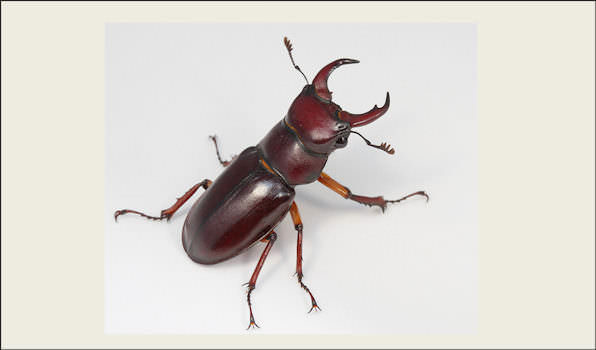Biodiversity Group: The Stag Beetle
One in four animals on earth is a beetle and they can be found almost anywhere in the world. The most spectacular of Britain’s beetles is the Stag beetle. Males grow to approximately 7cm and females approximately 5 cm in length and are a shiny black with chestnut brown wing cases. The adult male emerges in May or June flying at dusk
looking for a female. If he finds one he walks around her with his antlers wide open
showing himself off. Two males interested in the same female will fight using their antlers in much the same way as a male deer, with the stronger throwing the other onto its back. Injuries are rare as it is more a display of aggression than a dangerous fight. In June or July the female lays up to 21 eggs near rotting wood. Once hatched the larvae spend the next 5 – 6 years underground chewing through the wood, growing and shedding their skin. Eventually they make cocoons in which they transform into a pupa and finally, after just a few weeks into adult beetles. Although this occurs in autumn the adults stay underground until the following May or June when they emerge and start looking for a mate. By August most of them are dead. Scientists are not sure what the adults eat; some think they eat nothing at all, living off fat reserves, whilst others think they use a special tongue to lick the sap from trees. Although southern England has the highest number of Stag beetles, numbers are declining not only here but on the continent as well. Some are killed because people think they are dangerous, many get killed on roads as they are attracted to the warm tarmac surface and others struggle to find the habitat they need i.e. rotting wood. They are classed as a ‘protected species’, listed on Schedule 5 of the Wildlife and Countryside Act 1981.
Did You Know?
- Stag beetles are also known as horse pinchers, thunder beetles and oak ox.
- Although males have fearsome looking antlers they are quite harmless; it’s the females who can inflict a sharp nip with their smaller antlers if they are handled.
- Medieval peasants believed Stag beetles summoned thunder and lightning storms, they also thought that they flew around with hot coals in their jaws setting fire to buildings.
- Stag beetle larvae are really good for the garden eating lots of rotting wood and returning important minerals to the soil. They do not eat living plants or shrubs.

